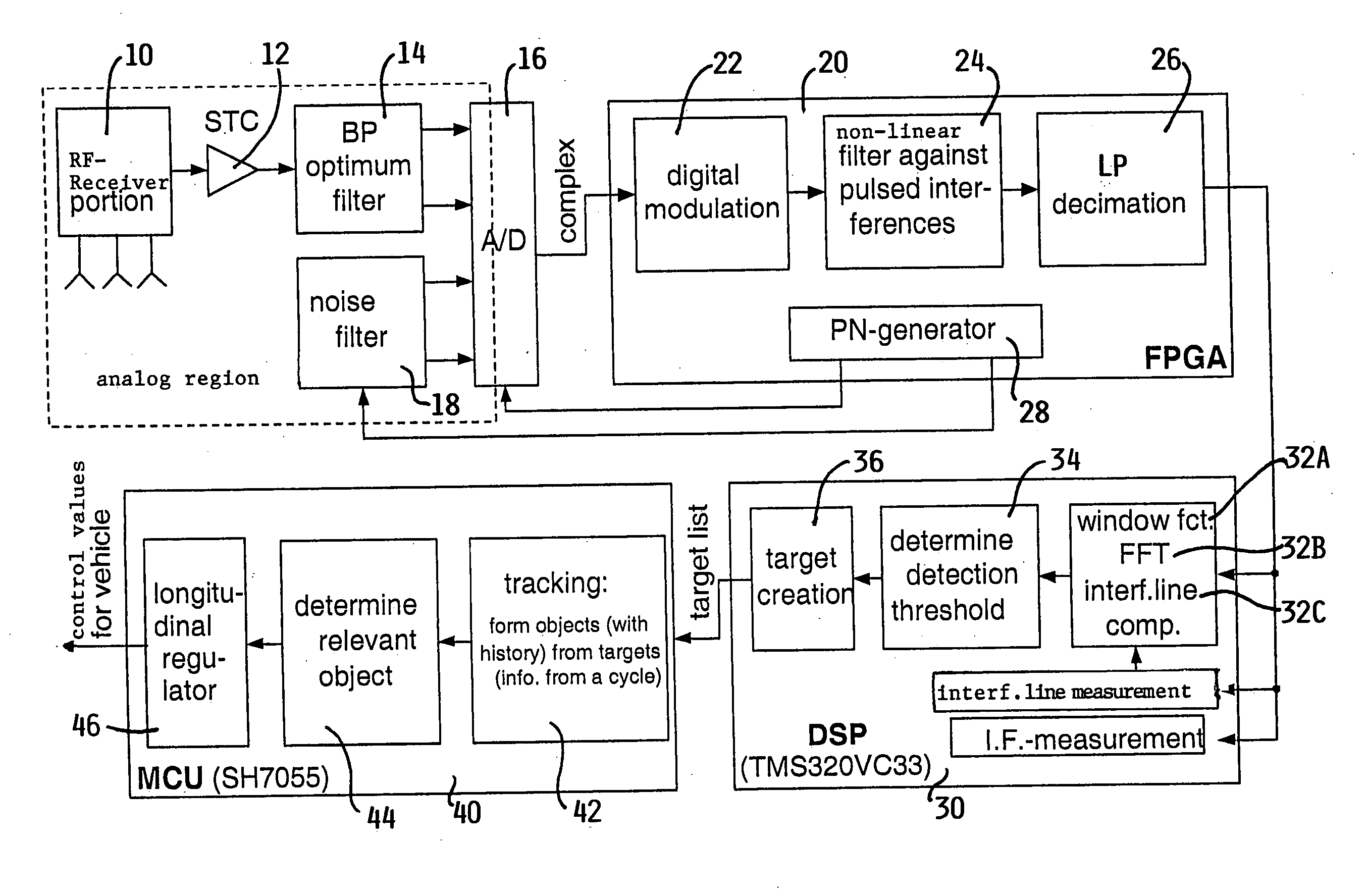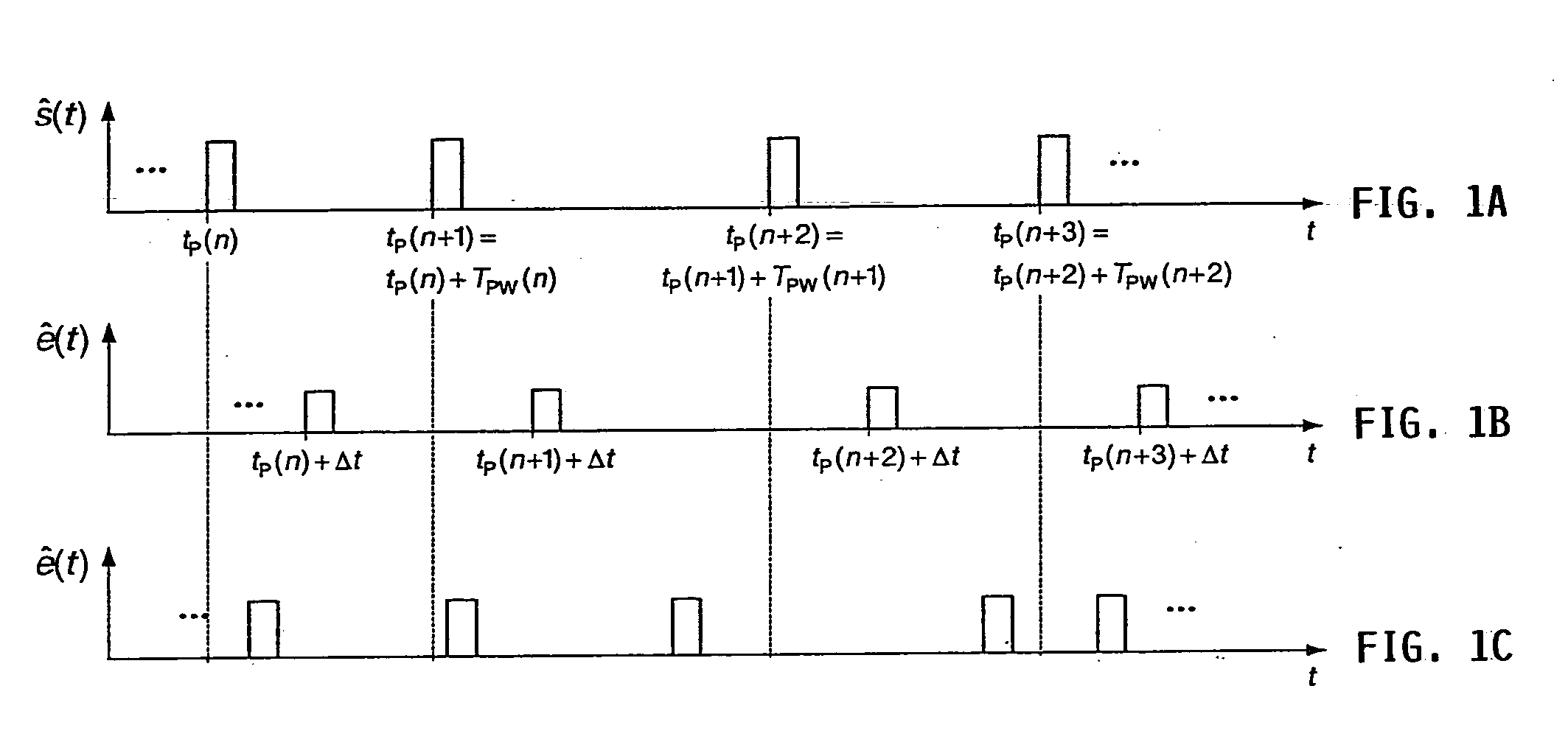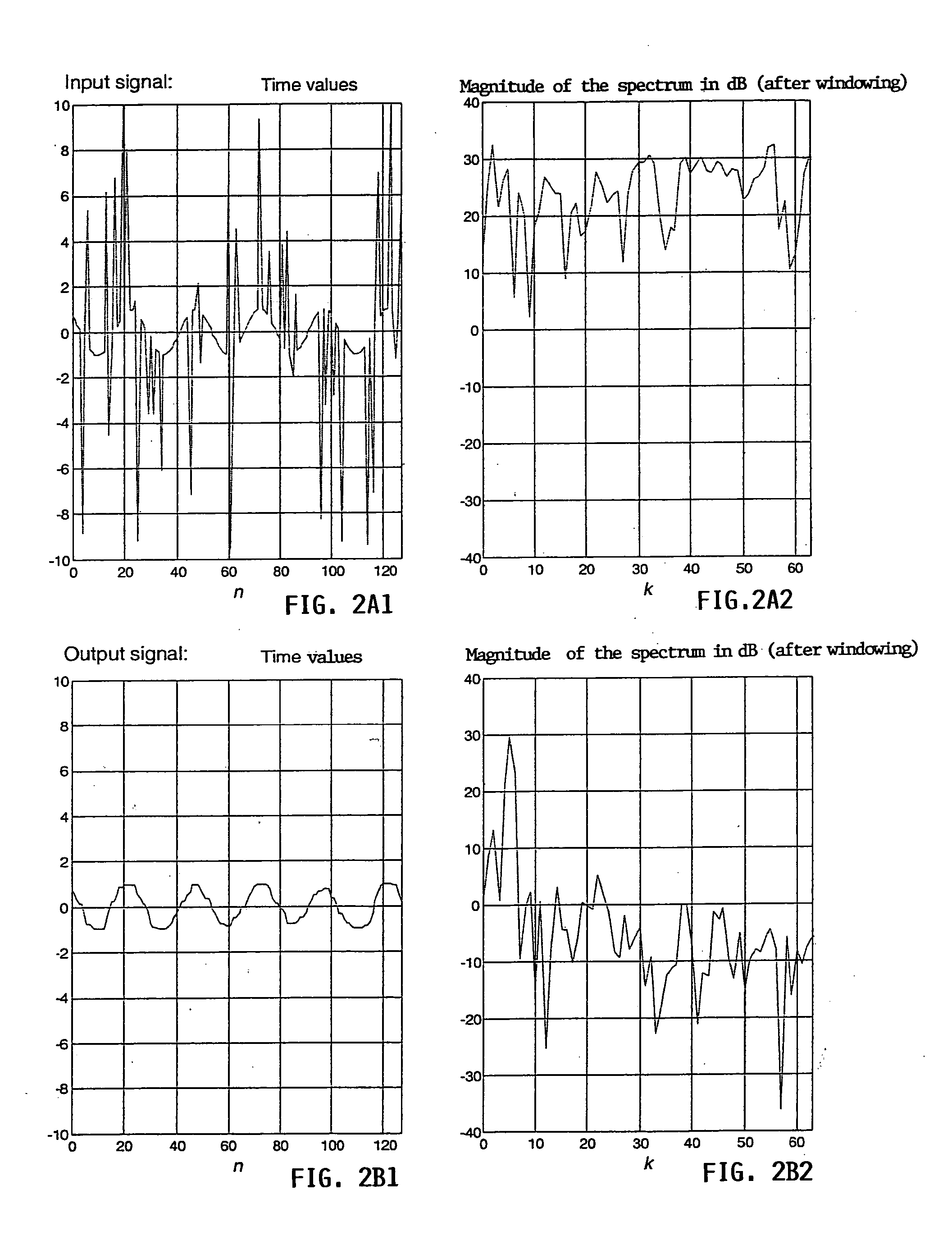Method of suppressing interferences in systems for detecting objects
a technology of object detection and interference, applied in the field of object detection interference suppression, can solve the problems of further signal processing (spectral analysis, .g. through fft or power), insufficient suppression of trappings and interferences to an adequate extent, etc., and achieves the effect of eliminating transient interference, improving filter effect, and easy implementation
- Summary
- Abstract
- Description
- Claims
- Application Information
AI Technical Summary
Benefits of technology
Problems solved by technology
Method used
Image
Examples
Embodiment Construction
[0035] In FIG. 1A for a pulsed system, the amplitude or envelope ŝ(t) of the transmitted wave of the frequency fs is shown for the case of rectangular pulses. The moments at which the transmit pulses begin are designated herein with tP(n). The distance, i.e. the time spacing, between two consecutive pulses is called the pulse repeat time TPW(n).
[0036] If this wave with the propagation velocity c is reflected on an object at the distance a, after the running or transit time Δt=2a / c the system receives the reflected and in general damped wave e(t). In FIG. 1B the amplitude or envelope ê(t) of the received wave is shown. Thus one can conclude or ascertain the distance of the object from the running time Δt, as long as the running time Δt is always smaller than the pulse repeat time TPW(n); otherwise ambiguity problems do arise—they are referred to as trappings. If the object detected by the wave moves with the relative velocity v relative to the measuring system, then the reflected wa...
PUM
 Login to View More
Login to View More Abstract
Description
Claims
Application Information
 Login to View More
Login to View More - R&D
- Intellectual Property
- Life Sciences
- Materials
- Tech Scout
- Unparalleled Data Quality
- Higher Quality Content
- 60% Fewer Hallucinations
Browse by: Latest US Patents, China's latest patents, Technical Efficacy Thesaurus, Application Domain, Technology Topic, Popular Technical Reports.
© 2025 PatSnap. All rights reserved.Legal|Privacy policy|Modern Slavery Act Transparency Statement|Sitemap|About US| Contact US: help@patsnap.com



